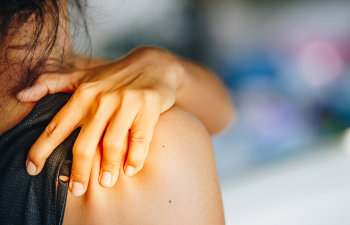
A shoulder labral tear is a common injury that affects the cartilage in the shoulder joint, causing pain, instability, and limited range of motion. The labrum is a ring of cartilage that surrounds the shoulder socket, providing stability to the joint and acting as an attachment point for muscles and tendons. When this cartilage is torn, it can lead to various symptoms and complications. While many labral tears can be managed with non-surgical treatments, some cases may require surgery to restore full function and relieve pain. Robotic Hip and Knee Replacement, LA, shares the common causes, symptoms, and treatments for shoulder labral tears and when surgery becomes necessary.
Causes of Shoulder Labral Tears
Shoulder labral tears are often caused by trauma or repetitive motions that strain the shoulder joint. The most common causes include:
- Sports Injuries: Athletes who engage in activities that involve throwing, such as baseball or tennis, are at higher risk for labral tears. Contact sports, like football and wrestling, can also lead to shoulder injuries.
- Trauma: A fall onto an outstretched arm, direct blows to the shoulder, or dislocations can cause significant damage to the labrum.
- Repetitive Overuse: Repetitive overhead motions, common in weightlifting or certain manual labor tasks, can gradually wear down the shoulder cartilage, increasing the likelihood of a tear.
- Aging: As people age, the labrum can become more brittle and susceptible to tears, even from minor injuries or strains.
According to the American Academy of Orthopaedic Surgeons (AAOS), labral tears are a frequent cause of shoulder pain in athletes, particularly those involved in overhead sports, and can affect up to 40% of individuals with shoulder injuries.
Symptoms of a Shoulder Labral Tear
The symptoms of a shoulder labral tear can vary depending on the severity and location of the tear. However, common signs include:
- Pain: A dull or sharp pain deep in the shoulder, especially during overhead activities or movements like throwing or lifting.
- Instability: A feeling that the shoulder might “pop” or dislocate, particularly with certain movements.
- Loss of Strength: Reduced strength in the shoulder, making it difficult to perform routine tasks like lifting objects or pushing doors open.
- Limited Range of Motion: Difficulty raising or rotating the arm without discomfort or pain.
- Clicking or Locking Sensation: Some individuals may experience a clicking or locking sensation when moving their shoulder.
Non-Surgical Treatment Options
In many cases, shoulder labral tears can be managed without surgery. Non-surgical treatments typically include:
- Rest and Activity Modification: Limiting activities that aggravate the shoulder can help the labrum heal naturally.
- Physical Therapy: A physical therapist can provide exercises to strengthen the shoulder muscles, improve stability, and restore range of motion.
- Medications: Nonsteroidal anti-inflammatory drugs (NSAIDs) like ibuprofen can reduce pain and inflammation.
- Corticosteroid Injections: In some cases, corticosteroid injections are used to reduce inflammation and pain in the shoulder joint.
When is Surgery Recommended?
While non-surgical treatments can be effective for many patients, surgery may be necessary in certain cases, especially when:
- Non-Surgical Treatments Fail: If physical therapy and other conservative treatments do not provide relief after several months, surgery may be considered.
- Severe Instability: If the shoulder continues to feel unstable, particularly after a dislocation or trauma, surgery may be needed to repair the torn labrum and stabilize the joint.
- Large or Complex Tears: More extensive labral tears, such as SLAP (Superior Labrum from Anterior to Posterior) tears, which affect the upper portion of the labrum, often require surgical intervention to restore full shoulder function.
- Athletes and Active Individuals: For athletes or those with physically demanding jobs, surgery may be the best option to regain the strength and stability needed to perform at a high level.
Arthroscopic surgery is considered the gold standard for repairing shoulder labral tears, with a success rate of over 85% in restoring function and reducing pain. This minimally invasive procedure involves small incisions and the use of a tiny camera (arthroscope) to guide the surgeon as they reattach the torn labrum. The recovery time for labral tear surgery can vary, but most patients can return to normal activities within 3-6 months following surgery, with physical therapy playing a crucial role in the rehabilitation process.
Shoulder labral tears can cause significant pain and limit daily activities, but not all cases require surgery. For minor tears, non-surgical treatments can often provide relief. However, if the injury is more severe or conservative methods fail to improve symptoms, surgery may be the best option to restore shoulder stability and function. If you’re experiencing symptoms of a shoulder labral tear contact Robotic Hip and Knee Replacement, LA, for an appointment with shoulder specialist and orthopedic surgeon, Dr. Farzin Kabaei, to determine the most appropriate course of treatment for your condition.
Posted on behalf of
8436 West 3rd Street Suite 800
Los Angeles, CA 90048
Phone: (310) 792-9300
Email: fk@docsspineortho.com
Mon - Fri 8AM - 5PM